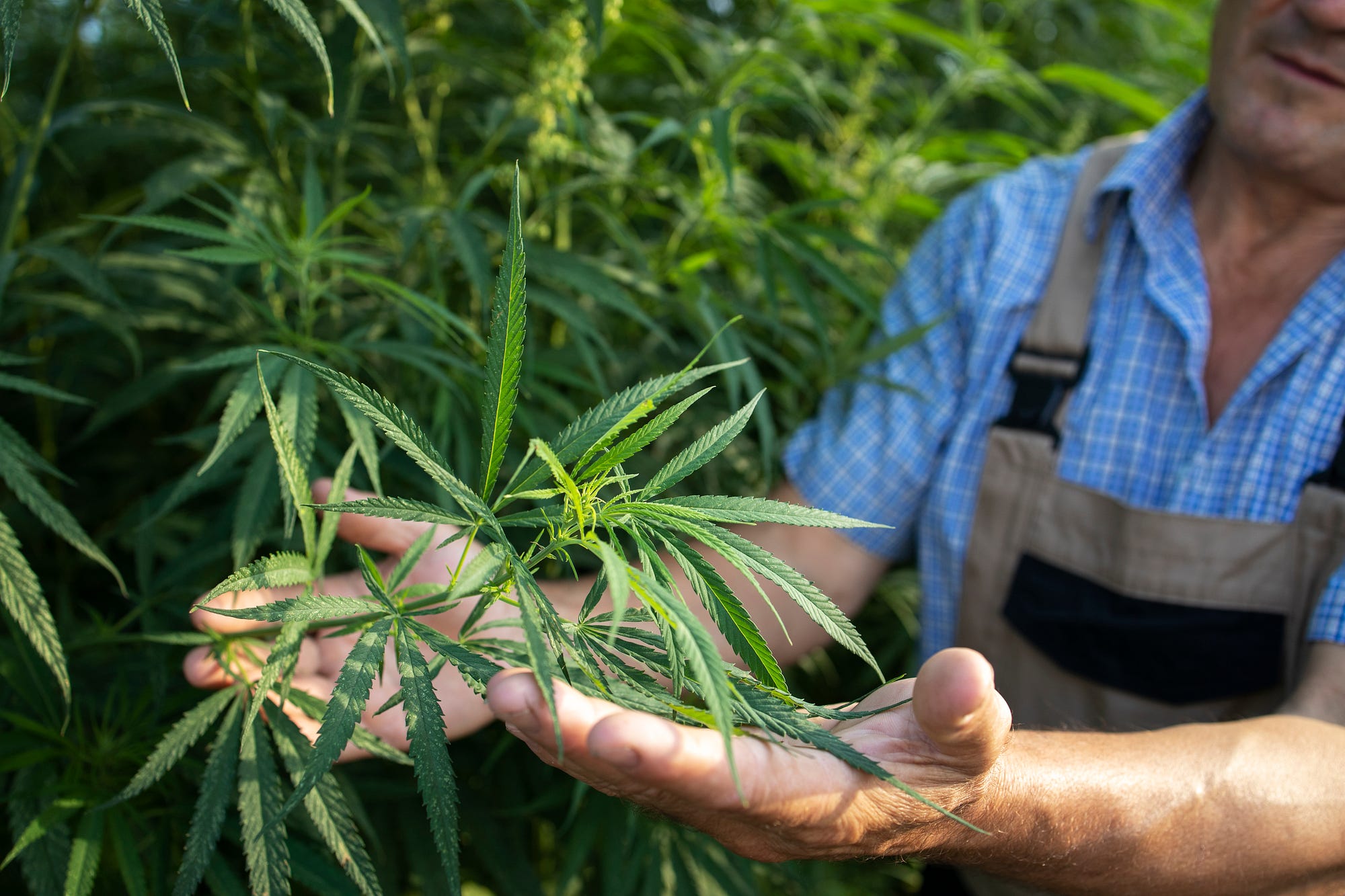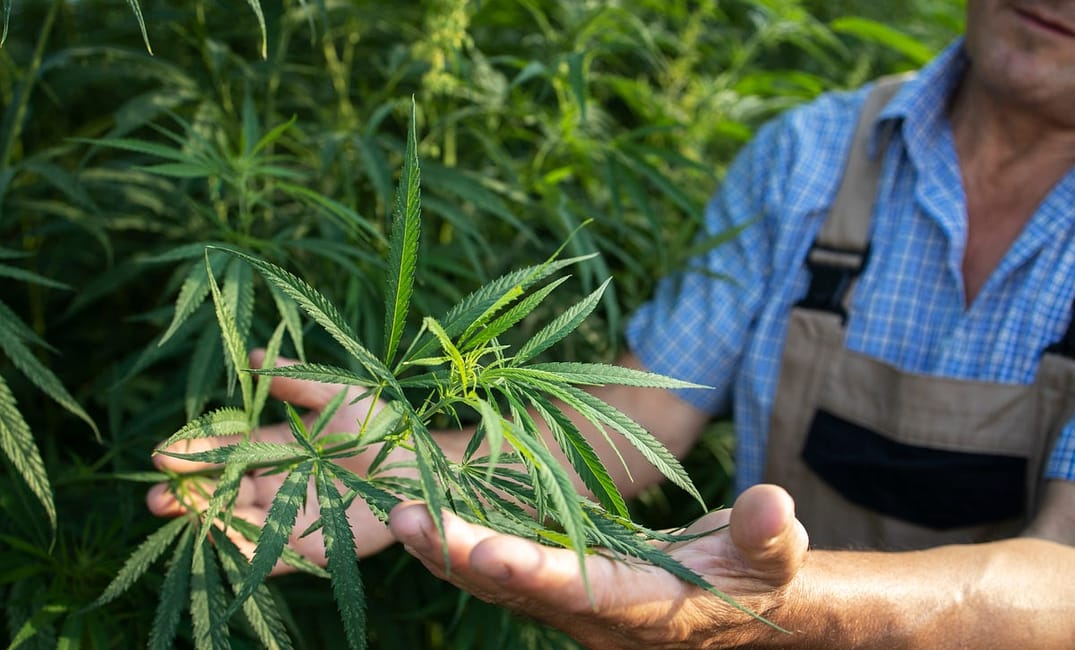
The other night, I was at a new friend’s birthday party in Bushwick in Brooklyn, hosted in the backyard of a mutual friend. I hadn’t known this friend long, but I knew she smoked a lot of weed, a quality that was, in my nearly 3 months of living in New York City, not nearly as common as shows like “High Maintenance” or local reporting would have you think. Apparently, in 2018, the city as a whole consumed nearly 10 times the mass of ganja than San Francisco did, where cannabis legislation has been in place for 25 years.
Like literally anyone ever, I had dreams of moving to New York after college, because it was not financially feasible for me to go to college there. After taking what I called “the scenic route” I graduated in June 2020 with no plans to go anywhere for fear of death and debilitating depression, so New York was on the back burner. At the time I thought I would be working in weed forever, having found a career that I was good at and for a while, really enjoyed.
More so than job precarity, I worried that my move to NYC would severely restrict my access to weed; at the time, weed has been for medical use and highly restricted since former Gov. Cuomo and the state passed the Compassionate Care Act in 2014, and as of October 2021, there are approximately 150,700 registered medical marijuana patients and upwards of 40 dispensaries, called “registered organization locations,” in the state. Then, as perhaps an act of diversion against his mounting harassment claims, Cuomo signed X ND legalized cannabis for recreational use in March of this year.
At the party, I was the only guest who had brought weed, so I began rolling some joints to pass around to anyone vaxxed and brave enough. Because there are currently no (legal) adult-use dispensaries or delivery services in the state, the weed I was rolling was from a smoke shop I had strolled into to buy a cheap grinder; after picking which one I wanted, the man behind the counter and plexiglass asked me, “want some weed?”
What else can one say but yes?
As I passed the finished rollie to the birthday girl, one of her friends asked “wait, so is weed legal in New York?”
The short answer is, yes, it is. But getting to this point has been far from straightforward
Under The Marijuana Regulation and Taxation Act, “legalize cannabis for adults 21 years of age or older” and “sets out a framework that will comprehensively regulate cannabis in New York State in a manner that will protect public health and safety, while promoting social equity and economic development.”
Like in the dozens of states that have also passed legislation legalizing adult use of cannabis, New York will have a state Office of Cannabis Management and a new board to oversee the adult cannabis, medical marijuana, and hemp industries. Adults 21 and over can possess up to three ounces of cannabis, and cultivate a handful of plants in their home. Records are being expunged and those in custody re-sentenced to reflect these changes; after all, tens of thousands of people remain incarcerated for non-violent drug offenses. Melissa Moore, New York State Director of the Drug Policy Alliance, said in a press release that “New York has enacted one of the most ambitious marijuana legalization programs in the country.”
By the looks of it, she could be right. MJBizDaily reported that, unlike many big cannabis states who have legalized adult-use since Colorado’s pioneering in 2012, equity was important, if not central, to the bill. Equity applicants, among other provisions, will receive waived or lowered application fees, mentorship, and 50% of adult-use licenses.
Additionally, 40% of tax revenue will be devoted to community reinvestment. None of this has yet to play out, however, so it’s too soon to tell how well the State will execute these measures.
I, of course, couldn’t explain all this to a stranger on a Saturday night, having puffed and imbibed myself, but I assured him the cops were not going to be busting down the door. He was satisfied and hit the joint, maybe mumbled something about Cuomo that I didn’t hear.
While it’s easy to laugh/cringe at Cuomo’s harassment as a direct catalyst for signing the bill and setting the wheels in motion for recreational cannabis in New York State, the bill had been in the works for almost a decade, and Cuomo had little to do with it. I spoke with Kassandra Frederique, the Executive Director of the Drug Policy Alliance, to better understand how we got here, and what the future of NY’s cannabis landscape could mean for the rest of the country.
As someone born and raised in New York to immigrant parents from Haiti, Frederique’s childhood impression was that cannabis was a drug, and by default, bad.
Once she reached college-age and realized its prevalence, despite criminalization, she realized “Hmm, this is, something is amiss here.” Her start at the DPA came unexpectedly when a policy internship she had lined up fell through shortly after the 2009 Rockefeller Drug Law Reform, an effort to shift the justice system “away from mass incarceration and toward a public health model,” per documents from the New York State Senate Standing Committee on Alcoholism & Drug Abuse.
The following conversation has been edited and condensed for clarity.
Amelia Williams: The DPA and its former iteration the Drug Policy Foundation has been advocating for drug policy reform against the War on Drugs since its founding in 1987, and cannabis has always been part of that. What has that work looked like in your tenure?
Kassandra Frederique: Part of the reason we chose cannabis reform as an organization, the founder and the folks at DPA before I got there, was recognizing that most people who use illicit substances, use cannabis. There were more people using cannabis that were having an experience that was different than what the propaganda was. In the last decade, you’ve seen people make the connection between the criminalization of cannabis and the way that it impacts certain communities. There has always been a legalized cannabis movement that has talked about individual rights and has talked about government ways, but I think we really needed that third leg of [how] it’s also targeting certain people and making certain communities more vulnerable to criminalizing institutions.
It’s not just a slap on the wrist; it is something that deserves a full and thorough conversation. Seeing the role that cannabis has played in the lives of people with epilepsy and cancer and HIV AIDS, there’s a lot there where we’ve seen the plant in a different light, and one that is an additive to people’s experience. And I think that DPA, along with other organizations like Marijuana Policy Project, and NORML, really saw an opportunity. Our work on cannabis has really pushed open a broader conversation around drug policies, but also with the overdose crisis also creates a huge platform for us to have a conversation about how we treat drugs in society.”
AW: Gov. Cuomo and the NY State Legislature passed Senate Bill S854A in March, but legalization isn’t an on-off switch or a quick, straightforward process. Months later, what does the conversation around legalization look like for NYC and NY state right now?
KF: We are legalized, but we don’t have an open market yet. People are being re-sentenced. Because you should not be getting arrested, and your records are being expunged. We are the only place where you can smoke in the street. You know we worked 10 years for this, talking about advocacy, bout social justice, criminalization, and racial justice. There are often conversations that focus on the science and focus on public health. Sometimes people can downplay that because oftentimes people ask that question, ‘what about the kids?’ And I say, ‘what about them?’ Black and Latino's kids are getting railroaded by this policy. The public health impacts associated with arrest and incarceration have devastating impacts.
AW: Most scientific and medical experts now seem to agree that cannabis has medicinal qualities and compounds that interact and influence our physical and mental states. The social justice conversations and advocacy for expungement, equity programs, and recognition of the racist application of the law have always existed, but now seem to be getting more attention. How do you see them in relation to your work and DPA’s goals?
KF: The social justice, racial justice issue is a public health and science issue as well. I think, oftentimes, people relegate it to being less important, or not as scientific. But criminalization harms people. If we’re talking about the mental impact of criminalization, that is a risk factor for compensation. It’s, you know, folks have talked a lot about, you know, what about our kids, and I’m like, we’re not having a conversation about all our kids. And it’s disingenuous to pretend that to be so because everyone keeps talking about we got to protect our kids, but you’re not protecting. Let’s not pretend that science has always been race-neutral, it has not. Science has been used to weaponize and to criminalize and to subjugate and stigmatize people.
And if we look at drug research, in and of itself, is funded through a political way of where drug research is mostly funded to look at abuse, and not about the drug itself. It’s important for social justice and the science things to be together. They can’t be separated, and one is not more important than the other. And I think that’s one thing that I hope people come away with is that the science around it is not more important than the social justice of it, that we actually have to deal with them together. And the way that we deal with them together is by alleviating prohibition.
AW: What message do you hope to send to other states who may finally be ready to pass their own cannabis legislation?
KF: I think we, I think we just have to recognize that we can do more. We can spend less money on criminalization and more on what people need to live their lives, like housing, better health care, better treatment, more food, jobs, and recreation. That’s what the DPA is trying to do, build a world after the drug war. And that is figuring out what are resources people need to thrive? And how can we pay for it?







